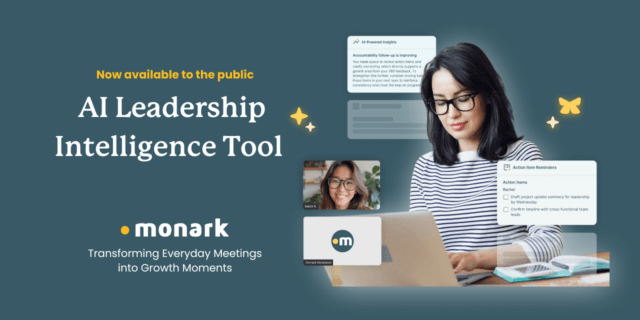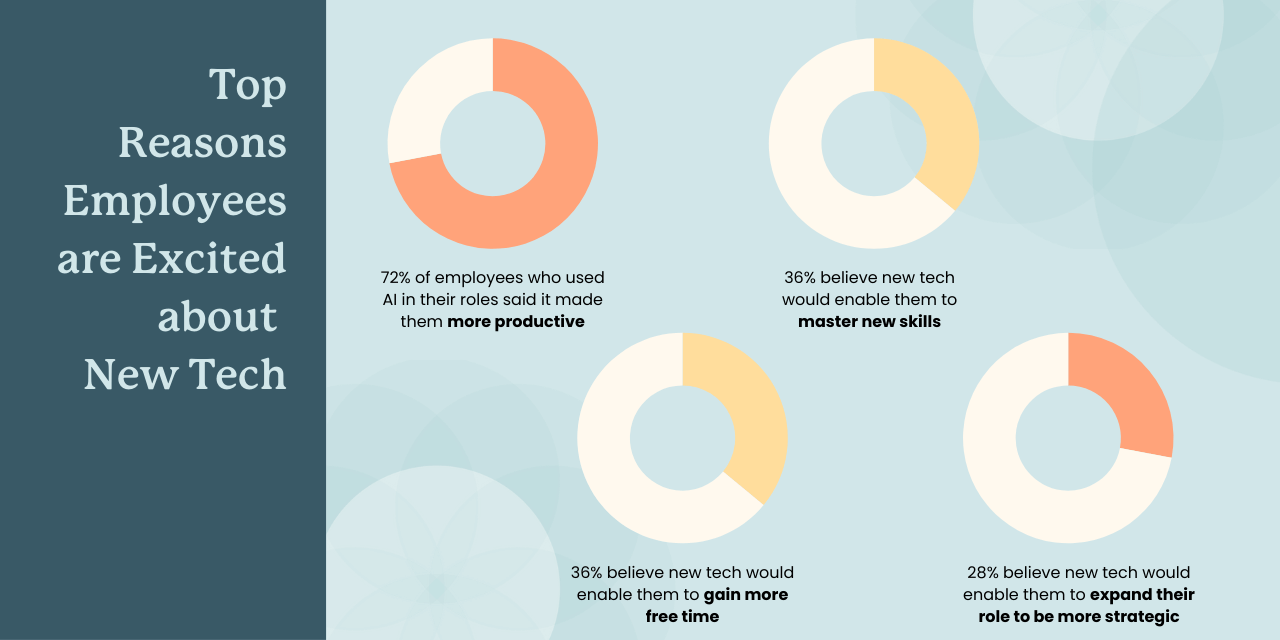
Preparing for the AI Revolution as an HR & People Leader

According to a survey featured in Fast Company’s Future of Work segment, 64% of participants reported that they would rather trust a robot than their human manager. The study also showed that artificial intelligence (AI) in the workplace is looked upon favorably by most employees, with respondents frequently using words like “excited” and “optimistic” to describe their thoughts on new technologies in the office. While this study might sound like it mostly speaks to positive feelings regarding technology adoption (and it certainly does), it also speaks volumes about the rampant distrust between direct reports and their managers.
That’s why Monark suggests actions based on these findings should be twofold:
1. Organizations must recognize that investing in technology means investing in employee attraction and retention and;
2. Organizations must invest in training leaders on how to build and sustain trust with their employees (particularly in an age where tech may satisfy direct reports’ other managerial expectations).
HR’s Case for Technological Investment
Quick advances in technology are leading to both enthusiasm and fear. As early as 2020 (far before AI’s widespread boom) enthusiasm from individuals believing that these technological innovations would enable them to “master new skills (36%), gain more free time (36%), and expand their current role so that it’s more strategic (28%)” was already setting in. In a more recent survey, 72% of employees who used AI in their roles said that it made them more productive. Employees don’t just see the potential of new tech but are energized by the real-world results they’re encountering once they put it to work.

On the other side of the spectrum though, real fear is spreading across the workforce when it comes to what widespread adoption of AI could mean for their roles (and it’s not necessarily unfounded). One report by Goldman and Sachs suggested that as many as 300 million jobs could be lost to automation. Supporting the idea that employees’ fears are real and must be addressed, one Gallup poll found that over one-fifth of employees have a fear of becoming obsolete (FOBO) in the face of AI, and a recent survey by CNBC and Survey Monkey indicated that the more employees come face to face with AI’s capabilities at work, the more likely they are to fear for their job security. Because it’s likely individuals will be forced to interact with and witness more and more of AI’s capabilities both in their personal and professional lives as it is quickly adopted by those around them, it is then likely that these fears will only grow.
It is an organization’s job then to remind employees of what we know to be true: AI is a tool to be leveraged which means there must ultimately be someone there to wield it. As for the jobs truly lost – like during the technological revolutions before it – others will be created to replace them. Supporting one’s workforce goes beyond providing this messaging though. It’s in providing individuals with opportunities to interact and engage with such technologies accompanied by the communication that makes clear the goal of doing so is to upskill employees and give them the chance to stay up-to-date within their industries and roles that you gain their trust. By providing such opportunities, and making such a priority within your organization, you can retain the talent you already have while attracting talent that may fear becoming obsolete elsewhere.
Training Leaders for the Manager vs. AI Face Off
Like we said before though, there is more to this problem than changing views on technology. At the center of this research, there is a true depiction of direct reports’ dissatisfaction with their managers. A shocking 82% of participants agreed that “robots can do certain jobs better than their boss can,” and robots only represent a small proportion of AI technology in the workplace. “In a work environment, AI can provide information, maintain work schedules, solve problems, manage budgets, answer questions about data, and even screen prospective employees.” As such, organizations must focus not only on developing their workforce’s technical capabilities but also on supporting managers to improve their interpersonal or “soft” skills in order to compete with AI in the workplace. In a changing world of work where technological innovation stands to forever alter the job of a manager, organizations must both rewrite our expectations of them (as their direct reports have already been doing) and provide them the tools and training they need to rise to the challenge. Critically, organizations must prepare them in two key ways: (1) teach leaders how to be change agents and (2) develop essential social skills that will allow them to fill the gaps AI can’t.

While the conversation has heavily focused on the perspective of middle managers versus AI’s capabilities, we know they are essential drivers for organizational success. Thus, in the battle of staying technologically relevant and not falling behind industry competitors, they must be leveraged to ensure technological initiatives are taken up by the organization as a whole. This means developing their abilities to communicate, handle resistance, and connect the organization’s vision for adopting technological innovation to the work of their own units.
Secondly, interpersonal skills like empathy and authenticity, which are critical to building trust and relationships, will become crucial for all leaders to excel at as technology takes up much of the mundane managerial tasks previously slotted for leaders. As this occurs, the new key role of a manager will become to truly support, coach, and develop those that report to them. One way of doing this can be to integrate new technologies like AI and VR to practice these skills, killing two birds with one stone by providing employees with access to such tools while they learn vital skills. Monark’s AI role play for example gives leaders the opportunity to practice complex conversations such as performance reviews and then provides real time feedback for leaders to grow from and develop.
The most important thing you can do now is ask yourself, “Are our leaders ready for the change ahead?” If not, take time to consider what your organization can do to step up to the challenge that’s not ahead, but instead already here.


